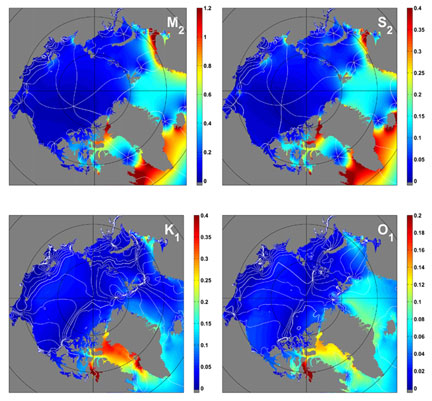 Amphidromic Systems
Amphidromic Systems
When a rotary wave is confined to a basin, amphidromic circulation results.
-
Amphidromic points/nodes: central points of no vertical displacement (no tide)
-
Antinodes: points of maximum vertical displacement (greatest tidal range), rotating around the edge of the system
-
Cotidal lines: connect all points experiencing the same phase of the tide (e.g. maximum or minimum), radiating from the central amphidromic point to the antinodes. Because tide waves do not travel with constant speed, but instead respond to changing depth, cotidal lines will not be evenly spaced or consistently shaped.
-
Corange lines: connect all points with equal tidal range. They form irregular circles which are concentric about the amphidromic point. Tidal range increases with distance from the central point.
-
The tide progresses around the amphidromic node once during each tidal period. At each point in a basin, water levels vary sinusoidally, according to a combination of multiple periodic functions.
-
An amphidromic system is created by each periodic tidal component. Wave periods, amplitudes, cotidal/corange lines and amphidromic points will be different for each harmonic.

Arctic Ocean Tidal Inversion Model (AOTIM-5) (Padman and Erofeeva, 2003)